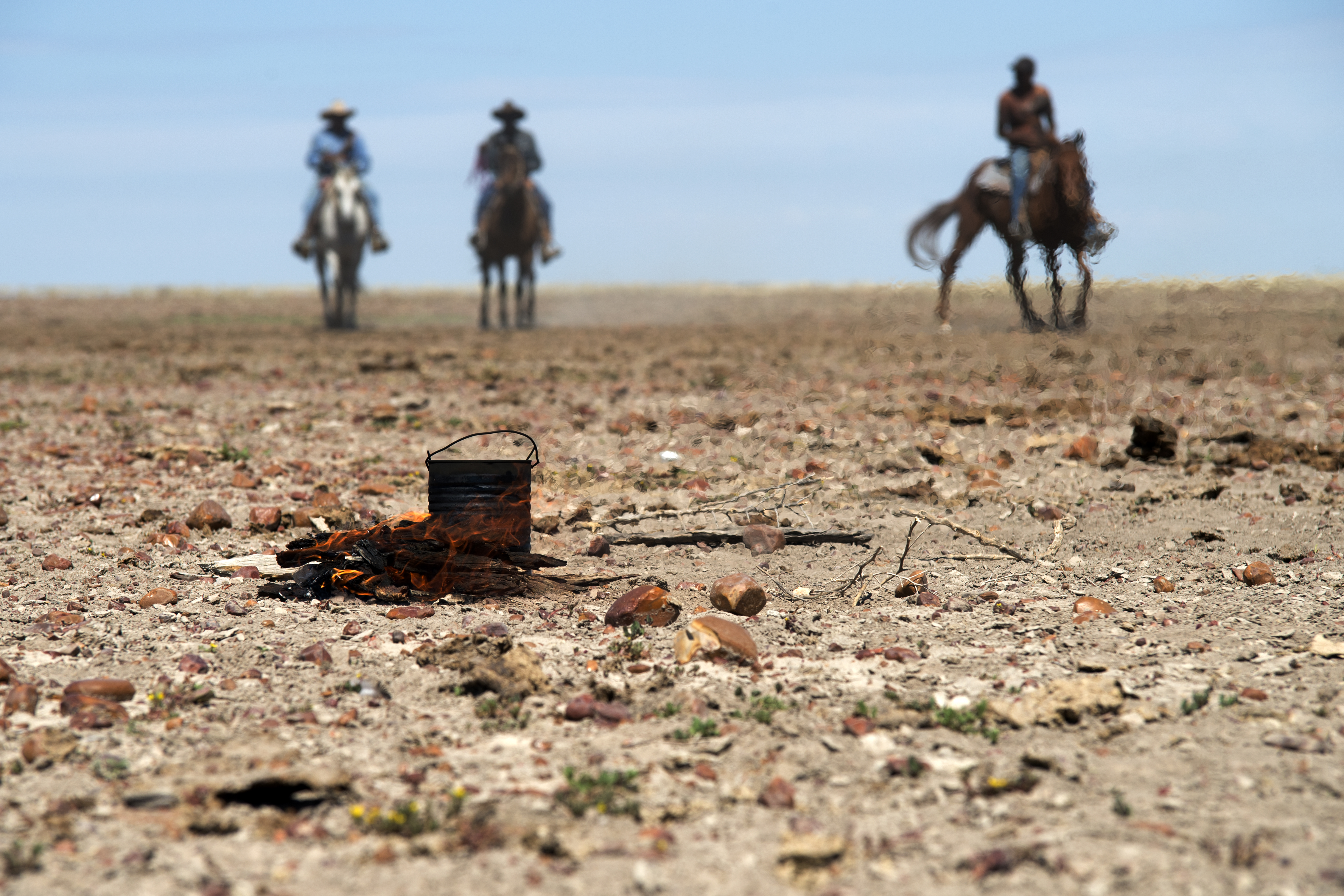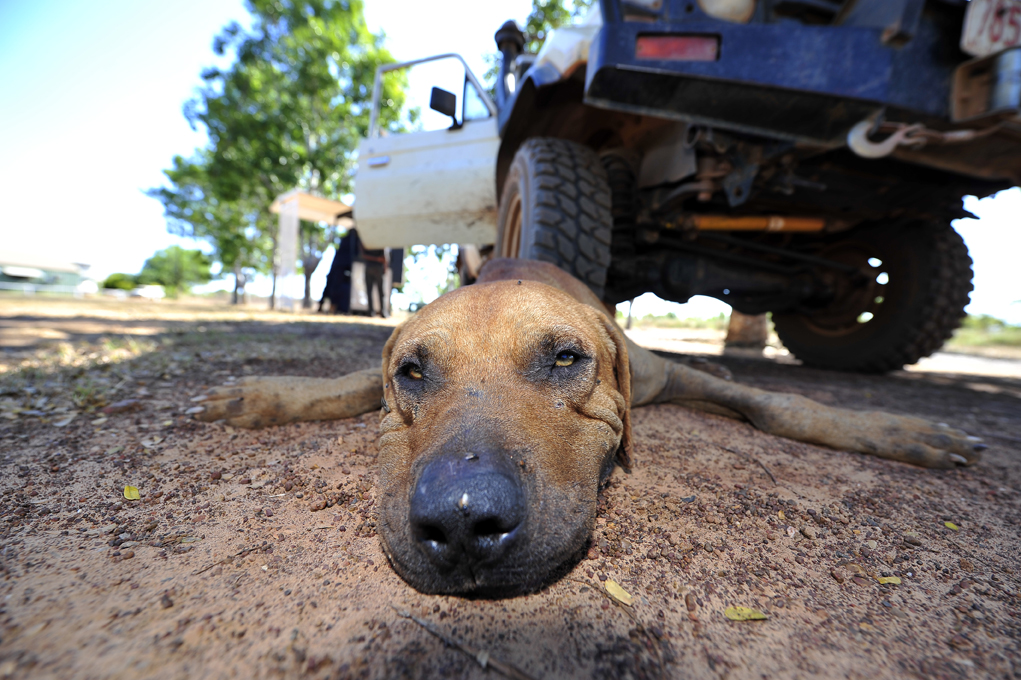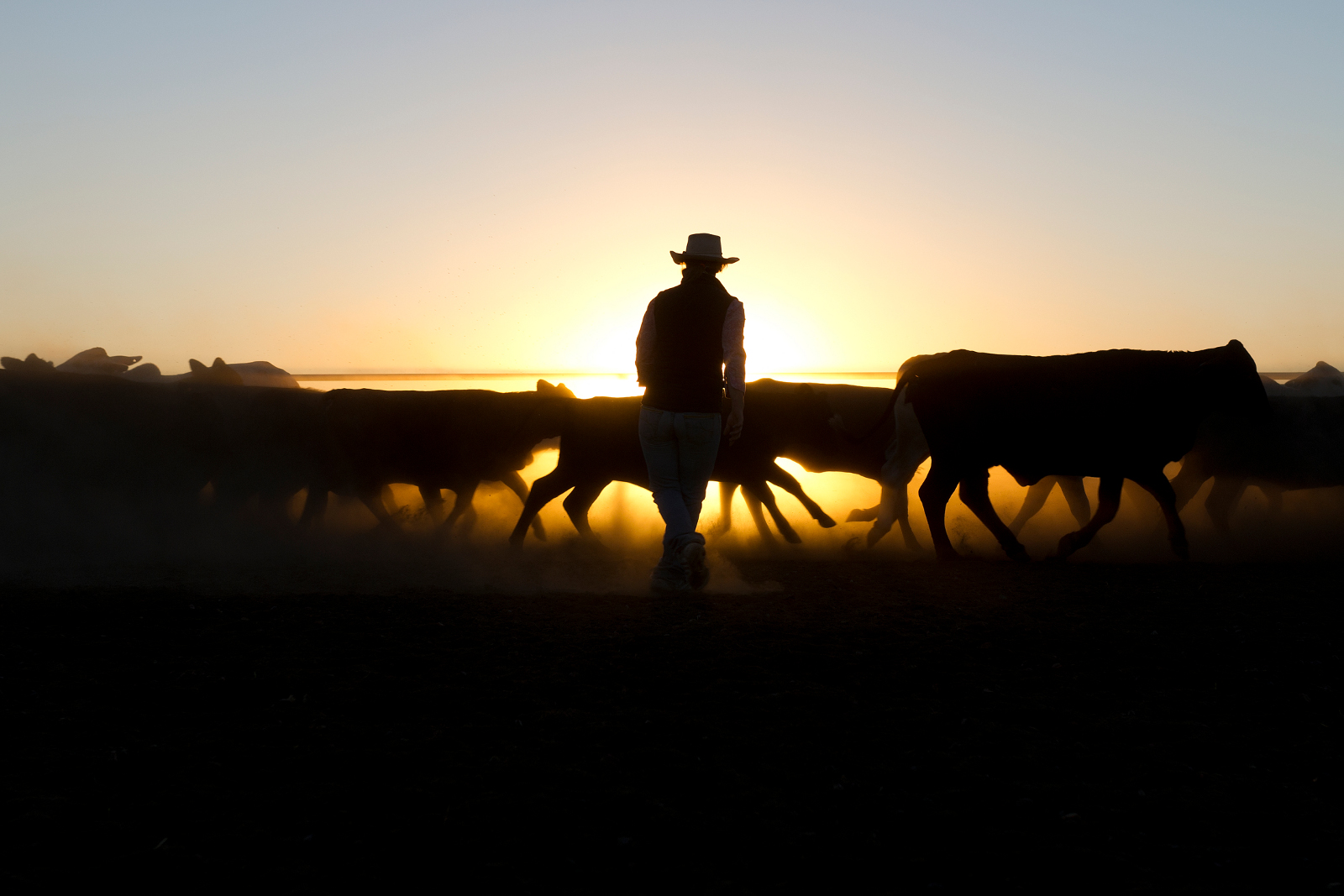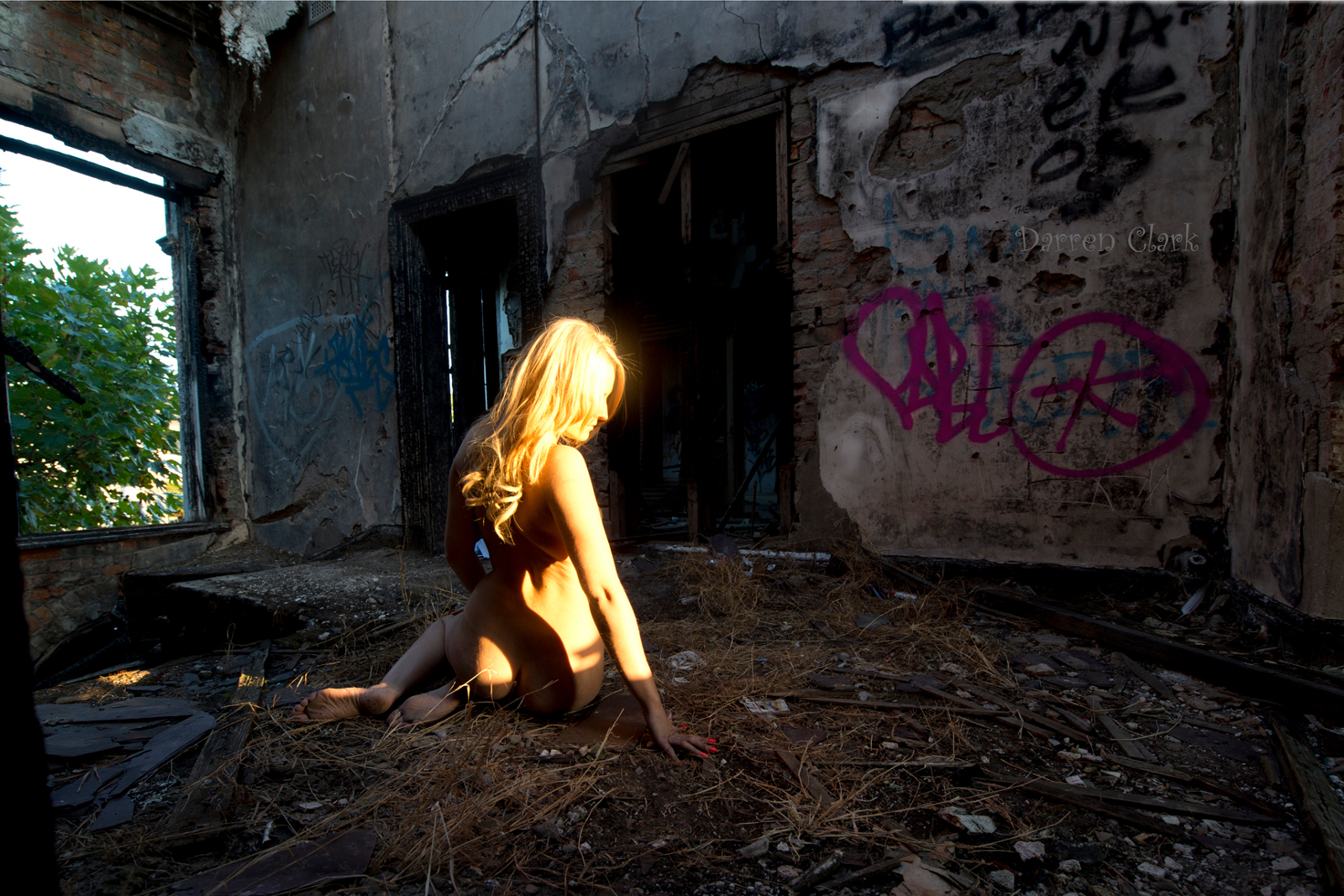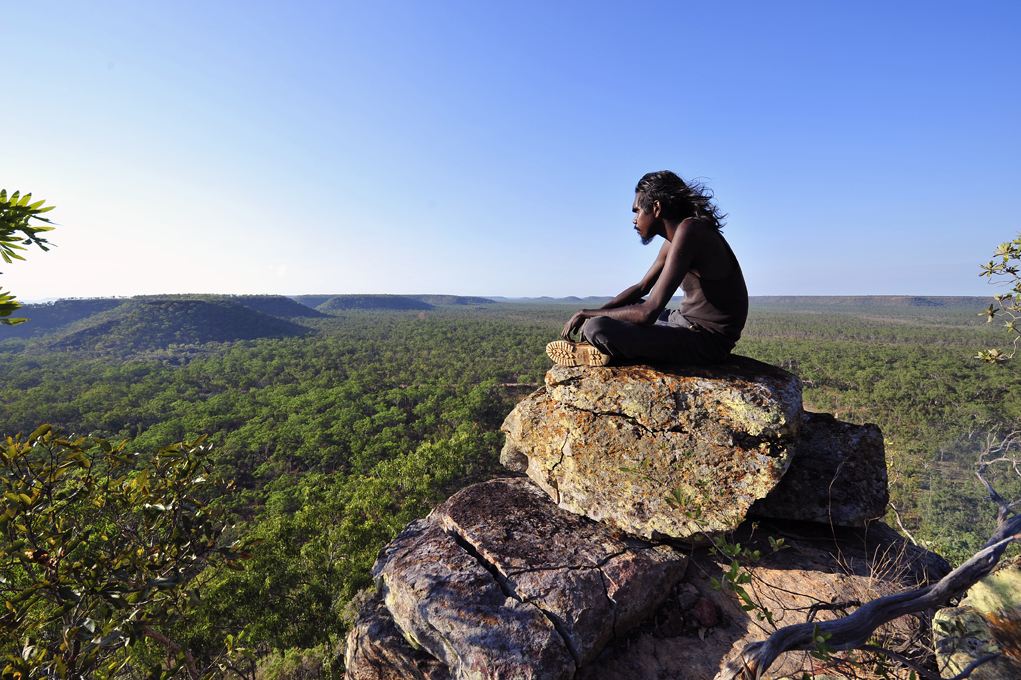Strippers and pole dancers, pearlers and farmers, Goths and punks, Aborigines, ballerinas , brooding inner-city scapes, homeless folk, rugged Outback vistas; they all surrender their psyche, their heart, through the brooding lens of Grovedale photographer Darren Clark.
Naked bodies, colours, faces and landscapes jump almost shockingly in your face – sometimes right in your face. They’re vibrant, different and a warm, sharply wakening assault on the senses.
It’s no real surprise that Clark’s works are hungrily collected by the National Library of Australia, State libraries in Western Australia, Victoria, New South Wales, the Northern Territory Library, galleries the length and breadth of this wide brown land.
It’s no surprise, either, that international publisher Harper Collins has engaged him to capture Australia’s cattle industry.
What is surprising is the poignancy and beauty of his soul-searching work. In every picture, the viewer will find a vivid expression of humanity that tugs at the heart-strings, that sparkles with life, that ventures into dark places, that exposes the beauty of Australia, that scrapes at red, raw nerves.
Clark’s odyssey through sex clubs, Aboriginal communities, cattle stations, ballet studios, pubs, brothels — his sojourn through deserts, plain and woodland – has returned a pictorial and personal insight few will ever experience .
He’s captured an Aboriginal girl lying blithely atop a crocodile, exotic dancers snapping selfies, ballet dancers in the bush, nymphs underwater in rocky inland pools, homeless people in Perth, Melbourne, The Alice, impoverished denizens of Darwin Long Grass, hard-grafting musicians and artists at work, healers, backpackers, punks, ravers, the desperate and destitute, graffiti, rodeos, bush kids … and lots more.
Remarkable as the images might be in their own right, for Clark himself, it’s been a redemptive, at times savaging, and rewarding journey — one that’s showing no signs of letting up.
“I try not to do too much research, I just go there,” he offers as explanation for his ability to insinuate himself into place and person alike.
“Once you learn your skills, how to make beautiful photo, it comes down to people skills and just allowing them be. I don’t really hassle people, I just let them tell their stories. It’s about living on the streets for 15 years, being unobtrusive and letting people tell you their stories.
“With the cattle industry, for example, they get so many photos taken by people but I do just 20 minutes taking pictures in the morning and the afternoon – the rest of the time I get in and work with them, engage with them.
“It’s about engendering trust, developing an understanding of their world. When I take the photos and show, share them and give them copies, they say ‘That’s exactly what we do and what we feel’. You learn your subject, live and breathe it, thrust yourself right into the middle of it.”
Clark describes himself as a chameleon. With each job he sees, learns and understands more of Australia.
And the more he witnesses and catalogues of the country, the more he finds the romantic notion of an archetypal distinctive Australian character, or attitude or ethos, simply doesn’t exist as such. The nation’s way too diverse.
“We’re everything here,” he says, categorically.
“Every country in the world lives here, it’s absolutely immense. To suggest you can fully document Australia is a joke.”
Even so, there’s an immutability about the Australian names as they roll off Clark’s tongue like a national geographical glossary: Barkly Tableland, Eyre Peninsula, Whyalla, Ceduna, Litchfield, Tjaynera, Abrolhos, Darwin, Collingwood, Northbridge, Roxy Downs, Andamooka, William Creek, Oodnadatta, Birdsville …
Clark’s personal journey is as remarkable as his photos. Seriously injured in a car accident in 1987, he was never the same after. Shattered and deeply depressed, he took off to Nepal and Kathmandu where, he says, “someone put a camera in my hands”.
It was a serious life-altering experience. From there on, he studied photography, worked on newspapers, lived on the streets, had his fringe-dweller work snapped up by the State Library of Victoria and he was off.
“It lit the fire inside me,” Clark says.
“I decided that’s what I wanted to do. I let go of everything I had, a house out the back of Lorne, my part in the family business. I put myself in a position where I had to succeed so it was either 100 per cent or nothing.”
For the past decade. He’s been backed by the National Library of Australia and two small diaries/albums he lugs about – together with his enthusiasm — effectively serve as an access-all-areas entry card to Australia.
“They’ve got me in with Hells Angels, Coffin Cheaters, prostitutes, ballerinas …. I guess everyone loves the idea of immortality,” Clarke says.
“When I tell people they’re going into Australian culture in a national or state library they really love it.”
— NOEL MURPHY
LINK: darrenclark.com.au/











